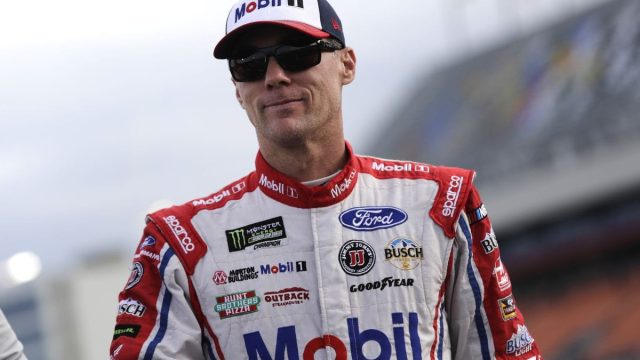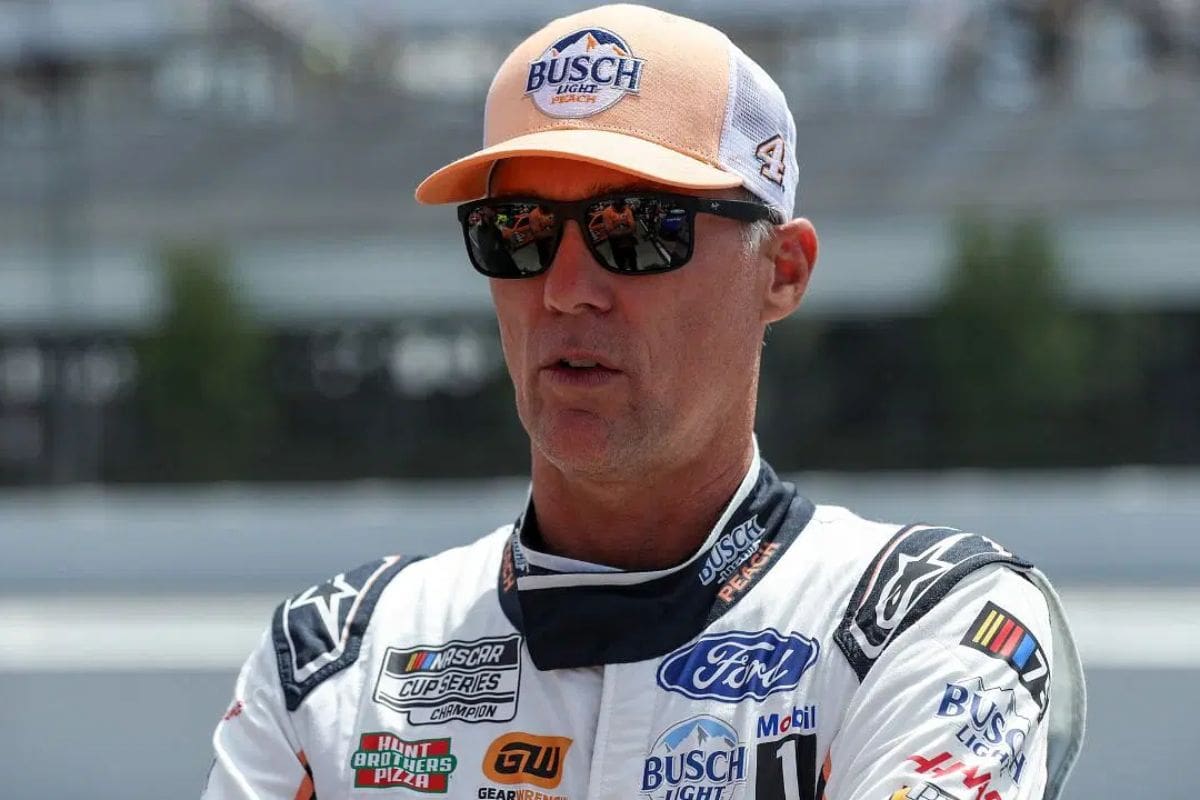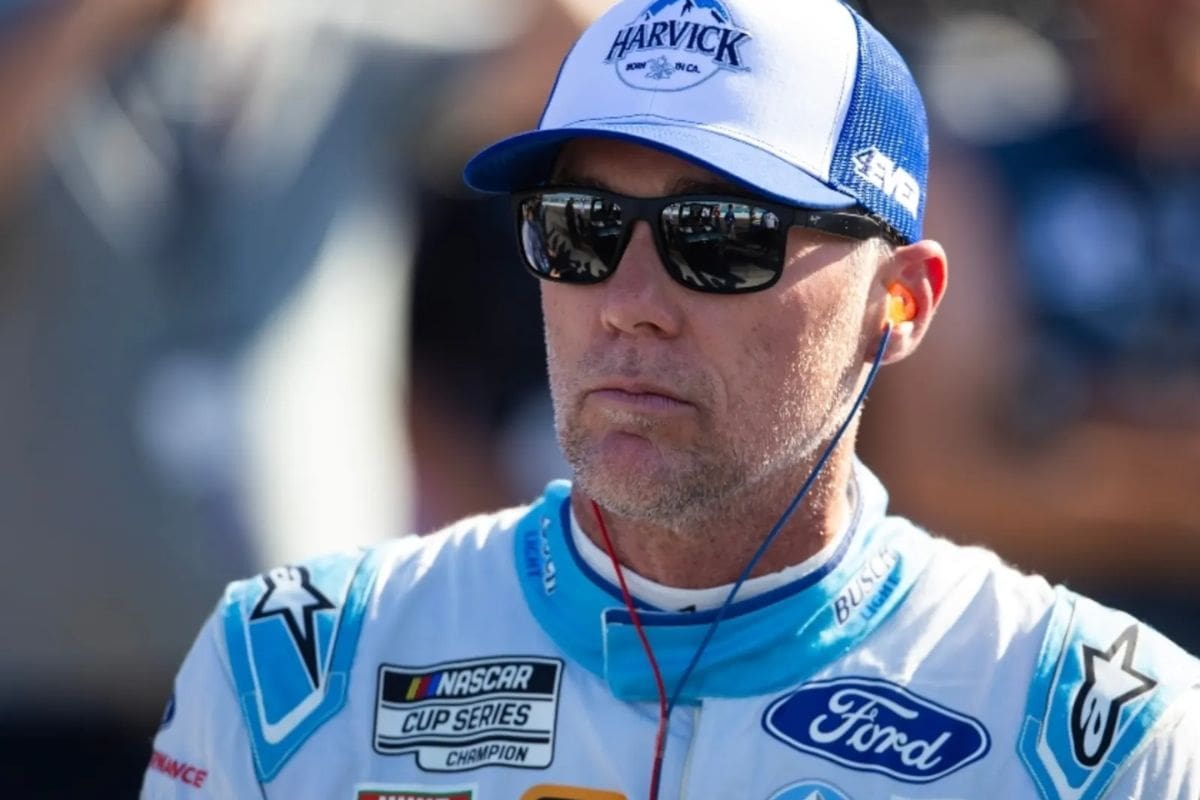Kevin Harvick Urges NASCAR to Revamp Oval Racing: Kevin Harvick‘s recent call for NASCAR to change its oval racing protocols, inspired by the sport’s skilled handling of inclement weather at the Chicago Street Course, signals a crucial moment for NASCAR. Harvick emphasizes the need for a consistent yet flexible rule set that can adapt to different conditions, thereby fostering a more competitive and engaging atmosphere for fans. The Chicago event showed the potential benefits of such an approach, suggesting that similar strategies could energize traditional oval races. However, the question remains: how exactly should NASCAR implement these changes to balance excitement with fairness?
Key Highlights
- Kevin Harvick advocates for adaptive and standardized wet-weather protocols in oval racing, inspired by Chicago’s successful implementation.
- Harvick emphasizes the need for consistent guidelines to enhance predictability and preparedness in adverse weather conditions.
- Transparent communication with teams and drivers is crucial for effective implementation of updated wet-weather protocols.
- Innovation in specialized equipment, like improved rain tires and track-drying technologies, is essential for managing oval track challenges.
- Balancing NASCAR’s tradition with innovative practices can improve competitiveness and viewer experience in wet-weather racing.
Kevin Harvick Praises NASCAR’s Handling of Wet Weather at Chicago Street Race
Kevin Harvick praised NASCAR’s tactical handling of wet weather conditions during the Chicago Street Course. He highlighted the crucial impact of allowing teams the freedom to choose suitable tires based on real-time track evaluations. Harvick’s commendation reveals a detailed grasp of the intricate balance between safety, strategy, and competition integrity. By empowering teams to adjust tire selections as needed, NASCAR not only increased the complexity of the race but also demonstrated an adaptive approach to unpredictable weather conditions.
Harvick emphasized the importance of this independence, observing that it cultivated a competitive atmosphere where teams could utilize their expertise and up-to-the-minute data to enhance performance. This method differs from stricter protocols that usually dictate specific tire models, regardless of changing track conditions. By enabling teams to evaluate and react to the track’s dampness, NASCAR facilitated a more natural and responsive racing experience, one that closely aligns with the challenges encountered by drivers and crews.
Moreover, the incorporation of live pit stops in wet conditions introduced another layer of complexity and thrill. Harvick proposed that this aspect could have significant implications for oval races, which have traditionally been governed by more cautious weather-related rules. The successful application of these approaches in Chicago could serve as a model for upcoming races, potentially reshaping NASCAR’s approach to adverse weather conditions across different track layouts.
Contrasting Approaches: Chicago vs. New Hampshire
In contrast to the creative and flexible approach adopted at the Chicago Street Race, NASCAR’s handling of rain at the New Hampshire race adhered to more traditional, rigid protocols that limited teams’ ability to adapt to changing track conditions. Kevin Harvick’s observations highlight the divergent methodologies, emphasizing how NASCAR’s inventive approach in Chicago allowed for a more dynamic and engaging race environment, while New Hampshire’s adherence to conventional rules stifled potential adaptability and excitement.
- Proactive Weather Management: Teams were allowed greater leeway to implement wet-weather strategies, enriching competitiveness and safety.
- Real-Time Adjustments: NASCAR enabled immediate modifications to race operations in response to evolving weather conditions.
- Improved Viewer Experience: The unpredictable elements introduced by the flexible approach captivated audiences and added layers of complexity to the race.
Conversely, New Hampshire’s race saw a strict adherence to pre-established rules, which many argue failed to capitalize on the potential for a more thrilling and adaptive racing experience. The rigid protocols mandated during inclement weather conditions led to predictable outcomes and diminished the strategic depth that teams could investigate. This notable difference highlights the potential for improvement in oval racing contexts, where a shift towards more adaptable and responsive regulations could replicate the success seen in Chicago.
Harvick’s call for a revamp in NASCAR’s oval racing approach emphasizes a broader need for the sport to evolve and adopt a more flexible mindset. By incorporating inventive strategies similar to those seen in the Chicago Street Race, NASCAR could enhance both the competitiveness of the sport and the overall viewer experience, driving engagement and excitement to new heights.
NASCAR’s Progressive Approach to Wet-Weather Racing
Harvick’s reflections on the differing weather management approaches between Chicago and New Hampshire highlight a broader trend in NASCAR’s strategy, particularly emphasizing the organization’s forward-thinking stance on wet-weather racing. NASCAR’s approach to managing wet-weather conditions, especially on oval tracks, has undergone noteworthy evolution. Harvick praised NASCAR’s proactive decision-making, precise communication, and the flexible strategies provided to teams, which were evident in the recent Chicago race.
“I think that the teams didn’t expect it. I think, when you looked at the forecast and all of a sudden, here comes the weather, pretty rapidly, all of a sudden, so I loved the way that NASCAR started the race.” – Harvick
This adaptive approach is indicative of NASCAR’s readiness to welcome innovation and improve the racing experience. By setting a clear race endpoint and empowering teams with tire choices, NASCAR has showed an understanding of the dynamic nature of racing conditions. This ensures safety without compromising the competitive integrity of the sport. The initiative to manage wet-weather conditions on oval tracks highlights NASCAR’s dedication to refining its race protocols to align with modern standards and expectations.
“That was, ‘Hey guys, go out, check out the track, and you come in and decide what kind of tires you want to put on your car.’ And we did live pit stops in the wet. I don’t know what that means for the ovals, but if that’s the pit road speed that we need to have on the ovals to do live pit stops, and we can do them at the road course, then maybe we should take the next step, the next time we do that. But it seems to me, as though, we are moving along at a pretty rapid pace, with our wet-weather situation, with the decisions that NASCAR is making.” – Harvick
Harvick’s optimism reflects a wider sentiment within the racing community, acknowledging NASCAR’s efforts to adapt and excel under varying conditions. The forward-thinking stance on wet-weather racing serves not only to enrich the spectator experience but also to push the boundaries of traditional racing norms. This shift signifies a crucial step toward a more resilient and versatile NASCAR, capable of delivering top-quality racing regardless of weather challenges.
Kevin Harvick Advocates for Consistency and Flexibility
Advocating for a balance between consistency and adaptability, Harvick highlights the importance of establishing clear race parameters early on to guarantee fairness and transparency for teams and spectators equally. He emphasizes that NASCAR’s proactive stance during the Chicago event serves as a compelling model, highlighting the benefits of well-defined guidelines, particularly in unpredictable conditions like rain-affected oval races.
Harvick’s advocacy is anchored on the belief that consistency in decision-making fosters a competitive yet fair environment. By ensuring that all stakeholders are on the same page regarding race protocols, NASCAR can mitigate confusion and maintain the integrity of the sport. This approach is not only vital for the teams, who can strategize more effectively, but also for the fans, who gain a clearer understanding of the race dynamics.
“I love that we had a pretty defined end to the race, pretty early. I was watching on television, but it was defined pretty early to television, and to the teams, ‘Hey, we’re ending this race at 8:20. That’ll be the last lap, and then we’re throwing the white flag.’”
So, I think when it’s fair to the teams, I like the fact that they designate that before they get too far into the race. I love how they gave them the choice on tires, and the rest of the day just kind of played out as it was, and that was what you had, as far as your decisions on the tires. So, I hope this is the direction that we’re going with the oval stuff. I know everybody has kind of been tip-toeing around, but it seemed like NASCAR was pretty aggressive in laying these things out.” – Harvick
- Predictability and Preparedness: Clear parameters enable teams to prepare thoroughly, reducing uncertainties and enhancing performance consistency.
- Enhanced Viewer Experience: Transparent rules and consistent application allow fans to follow the race more easily, increasing engagement and satisfaction.
- Adaptive Framework: Flexibility within a consistent framework allows NASCAR to address unique challenges of different race formats without compromising fairness.
Future Outlook: Applying Lessons Learned
Building on the successful implementation of consistent guidelines during rain-affected events, the future of NASCAR lies in methodically applying these lessons to improve the predictability and excitement of oval racing. Kevin Harvick’s insights following the Chicago race displayed the potential benefits of adopting these protocols, particularly in enhancing race dynamics and ensuring fan engagement.
The Chicago event showed the effectiveness of clear, consistent guidelines in managing adverse weather conditions, minimizing confusion, and maximizing safety. These principles, if applied to oval tracks, could revolutionize the way NASCAR handles unforeseen interruptions. Harvick’s observations suggest that a structured approach to wet-weather racing on ovals could mitigate the unpredictability that often dampens both competition and spectator enjoyment.
Implementing such strategies on oval tracks requires a detailed understanding of the unique challenges these circuits present. Unlike street courses, ovals demand higher speeds and different tire strategies, necessitating a tailored approach to wet-weather management. NASCAR’s ability to adapt its protocols to fit these specific conditions will be crucial. The development of specialized equipment, such as improved rain tires and advanced track-drying technologies, will also play a significant role in this evolution.
Additionally, consistent communication with teams and drivers will be vital in ensuring a smooth shift. Transparent guidelines and real-time updates can foster an environment where all stakeholders are well-informed and prepared, ultimately enhancing the race experience.
News in Brief: Kevin Harvick Urges NASCAR to Revamp Oval Racing
Kevin Harvick’s support of NASCAR’s progressive wet-weather procedures at the Chicago street race highlights the need for reliable and adaptable guidelines in oval racing.
By incorporating the insights gained from Chicago, NASCAR has the opportunity to improve the competitive scene and audience participation.
A thorough revision, based on adaptability and openness, pledges to raise the unpredictability and thrill inherent to the sport, thus cultivating a more dynamic and engaging racing setting.
ALSO READ: Kevin Harvick Slams Tyler Reddick for Constantly Failing to Win Races



